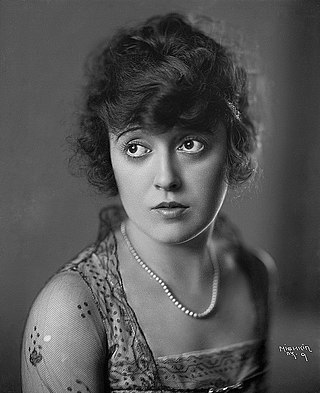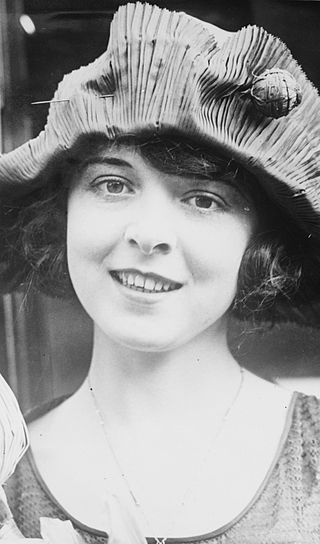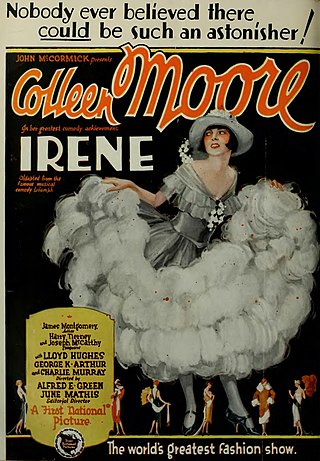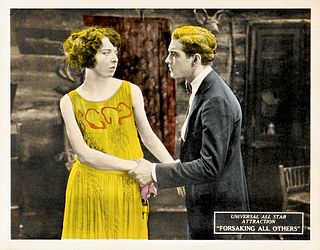
Roscoe Conkling "Fatty" Arbuckle was an American silent film actor, director, and screenwriter. He started at the Selig Polyscope Company and eventually moved to Keystone Studios, where he worked with Mabel Normand and Harold Lloyd as well as with his nephew, Al St. John. He also mentored Charlie Chaplin, Monty Banks and Bob Hope, and brought vaudeville star Buster Keaton into the movie business. Arbuckle was one of the most popular silent stars of the 1910s and one of the highest-paid actors in Hollywood, signing a contract in 1920 with Paramount Pictures for $1,000,000 a year.

Amabel Ethelreid Normand, better known as Mabel Normand, was an American silent film actress, director and screenwriter. She was a popular star and collaborator of Mack Sennett in their Keystone Studios films, and at the height of her career in the late 1910s and early 1920s had her own film studio and production company, the Mabel Normand Feature Film Company. On screen, she appeared in twelve successful films with Charlie Chaplin and seventeen with Roscoe "Fatty" Arbuckle, sometimes writing and directing films featuring Chaplin as her leading man.

William Surrey Hart was an American silent film actor, screenwriter, director and producer. He is remembered as a foremost Western star of the silent era who "imbued all of his characters with honor and integrity." During the late 1910s and early 1920s, he was one of the most consistently popular movie stars, frequently ranking high among male actors in popularity contests held by movie fan magazines.

Colleen Moore was an American film actress who began her career during the silent film era. Moore became one of the most fashionable stars of the era and helped popularize the bobbed haircut.

Alice Lake was an American film actress. She began her career during the silent film era and often appeared in comedy shorts opposite Roscoe "Fatty" Arbuckle.

Her Wild Oat is a 1927 American silent comedy film made by First National Pictures, directed by Marshall Neilan, and starring Colleen Moore. The screenplay was written by Gerald C. Duffy, based on a story by Howard Irving Young.

Irene is a 1926 American silent romantic comedy film starring Colleen Moore, and partially shot in Technicolor. The film was directed by Alfred E. Green, produced by Moore's husband John McCormick, and based on the musical Irene written by James Montgomery with music and lyrics by Harry Tierney and Joseph McCarthy.

The Scarlet Letter is a 1934 American film directed by Robert G. Vignola and based on the 1850 novel of the same name by Nathaniel Hawthorne.

Why Be Good? is a 1929 American silent comedy film produced by First National Pictures starring Colleen Moore and Neil Hamilton. The film has no audible dialogue but is accompanied by a Vitaphone soundtrack with music, sound effects and some synchronized singing.

Orchids and Ermine is a 1927 silent film comedy starring Colleen Moore, filmed partly on location in New York. The film still exists. This was Mickey Rooney's first feature-length film.

Naughty but Nice is a 1927 American silent romantic comedy film directed by Millard Webb. Colleen Moore plays Bernice Sumners, a hayseed sent to a ritzy boarding school for finishing after her family strikes it rich in oil.

A Roman Scandal is a 1919 American short silent comedy film starring Colleen Moore, and directed by Al Christie.

Oh, Kay! is a 1928 silent film produced by John McCormick and distributed by First National Pictures. McCormick's wife Colleen Moore starred and Mervyn LeRoy directed the film. It is based on the 1926 musical Oh, Kay!, which had music by George Gershwin, lyrics by Ira Gershwin, and a book by Guy Bolton and P. G. Wodehouse.

Forsaking All Others is a 1922 American silent drama film starring actress Colleen Moore and directed by Emile Chautard for Universal Studios. It was made before Colleen became famous as a flapper but did visit some of the same subjects her later films would.

Little Orphant Annie is a 1918 American silent drama film directed by Colin Campbell and stars Colleen Moore, in her first leading role, as the title character. The film is based on James Whitcomb Riley's popular 1885 poem of the same title. Riley also appears in the film.

Social Register is an American 1934 pre-Code comedy-drama musical film starring Colleen Moore. The film re-united her with her old friend and one of the first directors to give her film career a start, Marshall Neilan. The film was based on the 1931 play of the same name by Anita Loos and John Emerson.

The Devil's Claim is a 1920 American silent drama film starring Sessue Hayakawa and Colleen Moore. A print of this film survives.

The Man in the Moonlight is a 1919 American silent drama film a set in the great north, starring Colleen Moore and Monroe Salisbury.

Ella Cinders is a 1926 American silent comedy film directed by Alfred E. Green, starring Colleen Moore, produced by her husband John McCormick, and featuring Moore's recurring co-star, Lloyd Hughes. The film is based on the syndicated comic strip of the same name by William M. Conselman and Charles Plumb, which in turn was based upon the millennia-old folk tale of Cinderella.

Sally is a 1925 American silent romantic comedy film starring Colleen Moore. The film was directed by Alfred E. Green, produced by Moore's husband John McCormick, and based on the musical Sally written by Guy Bolton and Clifford Grey that was adapted to film by June Mathis. The play was a Florenz Ziegfeld Jr. production written specifically for Marilyn Miller that opened on December 21, 1920, at the New Amsterdam Theatre on Broadway. It ran for 570 performances.


















